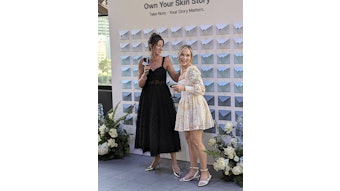From producing network specials to working closely with Oprah Winfrey for seven years, I love the world of television. I’ve seen it all, and yet one of my favorite things is watching someone make the news or getting broadcast publicity for the very first time. Getting booked on TV for your business is not as hard as you might think—the key is following the three P’s: pitch, press and persistence.
What’s your pitch?
A pitch is simply another word for your hook or unique selling point. Whenever you want to get someone’s attention, it is important that you never forget the first rule of engagement: Always make it short, simple and concise, and don’t forget, memorable. You have to make your pitch clear as day to media professionals, especially busy TV producers. I often joke that TV producers are illiterate because so many press releases are never responded to, but the reality is they don’t have time to read pages upon pages of promotional material.
First things first, you need that catchy press release. It should be something that’s quick and easy to understand. Don’t be shy, because you can’t wait for the press to come to you—you must go to it. And guess what? This isn’t as hard as it seems. Right now, you probably know someone who knows someone in the media. Or even if you don’t, be bold and ask someone media-related for a phone number or an e-mail address. Invite them to attend your event and activities. Make sure you get your hook across, because that’s the information that actually will draw them in. Once you make that first connection, here are some other important tips as listed from the great PR Web site, www.publicityhound.com.
1. Find out how far in advance your press release is needed. Some publications have set time limits and need your press release well ahead of time.
2. Plan releases so editors have information well in advance of the release date. See if the release can be made before, and then again on, the date of your event. Keep your event fresh in their mind.
3. Respond immediately to requests for follow-up data, and make sure all questions are answered thoroughly. Developing a good open relationship is to your advantage.
For the media, the first paragraph of any press release is critical. It should alert and inform the audience about what you are promoting. Keep it to three or four sentences, and be sure it sets all the main points covered in the release. Avoid too much detail in the first paragraph. The most important thing to remember is to make the press release concise and keep it to just one page. Because of the aforementioned time crunch, press releases that are more than one page are likely to just hit the garbage can.
Also, make sure to have an up-to-date, engaging Web site. After your press release catches the media’s attention, the Internet is where a researcher will go to find out more about you. Make sure your information is easily accessible, your hook is readily apparent and you have contact information included. A good Web site can be the best marketing tool you have.
Follow-up is the key
Once you succeed with your initial news coverage, the feeling is out of this world. Many small-business owners have experienced this but, unfortunately, they often forget to do the little things that can keep that good thing going. Think about this: What would you do if your company was featured in a news story or TV newscast? What would you do to maximize that? You’d show that article or clip to everyone you knew. Maybe you would even call your great-aunt Martha who you haven’t seen in years to tell her about your exposure. Many of you would post it on your bulletin board at work, or scan it for e-mail distribution. Those are all good things, but go even further. Think about the following options for giving your media coverage that extra push.
1. Send local news coverage to nationally based reporters or syndicated shows. Media begets media.
2. Hand out media clips at trade shows, conferences, seminars and networking events as part of your event packet.
3. Print out all media clips, and maintain them in a media file so they can be copied and sent at a moment’s notice.
Persistence pays off
Wouldn’t it be nice if you could just wave a magic wand—and poof—you’re on TV? Though it doesn’t quite work that way, don’t get frustrated. Be persistent. Effective publicity takes time. Follow up on everything and every lead. Without persistence, your story might not be told. The rule of seven states that it takes seven attempts to get a “yes” answer. Don’t give up though. Producers do need to be gently prodded over and over again so they know your project or pitch is still valid and very much alive.
Some say there are no guarantees in the real world, but, in TV, there is one major guaranteed secret to success. Whether you like it or not, you live in a world of sound bites. According to www.publicityhound.com, “the sound bite should tell people (1) who the creator is, (2) what he or she does, and (3) why the work is of interest (the meaningful difference)—in less than 30 seconds (eventually, when it is time for television or radio, one will have to cut it to 15 seconds).” And remember that you need to be able to articulately explain the essence of your hook in those 30 seconds. For television’s purposes, you could be the best expert in the world, but unless you’re able to express your ideas clearly and engagingly, you surely won’t make a good TV guest.
Make sure to expand your horizons as you look around, as well. Most broadcast stations are required to provide a certain amount of their broadcast time for community affairs, most commonly in the format of Public Service Announcements (PSA). Often you can get coverage for your business by aligning yourself with a worthy cause, sponsoring an event or relating your business with news that is happening. With the explosion of cable and its myriad of channels, the opportunities for PSAs have exponentially increased. Put your thinking cap on and see what alliances or partnerships you can foster in your community that will pay off in big publicity dividends.
With 2007 here already, make a commitment to develop a really fantastic pitch that will get you noticed. Let this be the year you apply yourself, make your material the best it can look and really focus on your greatest strengths.










